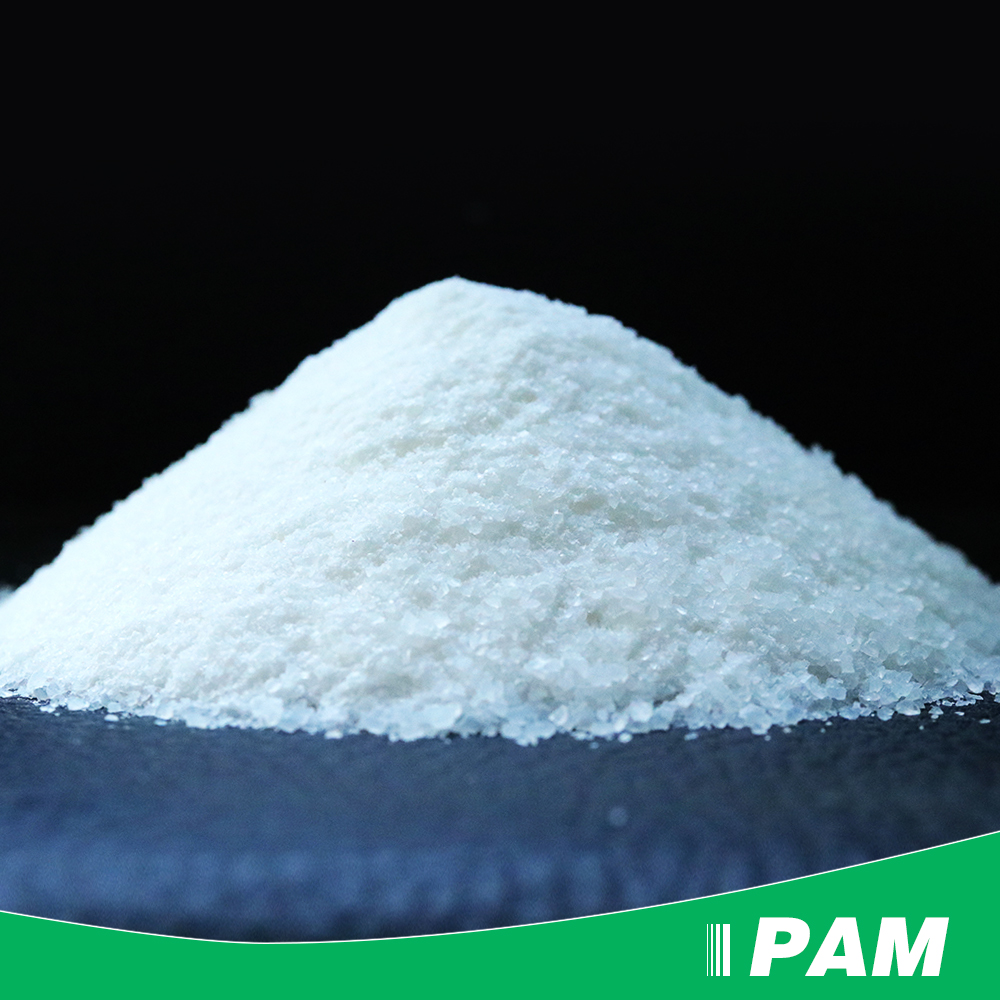
Polyacrylamide (PAM) is a highly effective polymer used in wastewater treatment to improve water quality by facilitating the removal of suspended solids, oils, and other contaminants. However, choosing the right type of polyacrylamide for wastewater treatment can be a complex task due to the wide variety of options available. This guide will help you understand the different types of PAM, how to select the best one for your needs, and the factors to consider in order to optimize your wastewater treatment processes.

Polyacrylamide is a water-soluble polymer that can be used in different forms: anionic, cationic, and non-ionic. It is widely used in wastewater treatment processes such as flocculation, coagulation, and sludge dewatering. PAM works by binding to particles in the water, causing them to clump together (flocculation), making it easier to remove these impurities through sedimentation or filtration.
The right choice of PAM can improve the efficiency of your treatment process, reduce chemical usage, and enhance the overall quality of the treated water.
When selecting polyacrylamide for wastewater treatment, it’s essential to understand the differences between the various types of PAM available:
Anionic Polyacrylamide
Anionic polyacrylamide is most commonly used in wastewater treatment applications that involve negatively charged particles. This type of PAM is ideal for situations where the suspended particles are negatively charged, such as in municipal and industrial wastewater treatment, and for treating water with a high content of organic materials. It is particularly effective in flocculation and clarifying suspended solids.
Cationic Polyacrylamide
Cationic polyacrylamide is used when dealing with positively charged particles. It is particularly beneficial for treating water with high turbidity or organic pollutants, like oil, fats, and proteins. Cationic PAM is often used in industrial applications, including paper manufacturing, mining, and textile industries. This type of polymer is highly effective for sludge dewatering, especially in municipal and industrial wastewater treatment plants.
Non-Ionic Polyacrylamide
Non-ionic polyacrylamide is less common in wastewater treatment but is useful when treating water with neutral or slightly acidic properties. It is particularly effective when no strong charge interaction is required, and it's often used in situations where flocculants are needed without significant ionic interactions.
Water Chemistry and Contaminant Types
The water's chemical composition, including pH, turbidity, and the type of contaminants, will influence the type of PAM you should choose. If the wastewater contains a lot of suspended organic matter or oils, cationic or anionic PAM may be the best choice. For simpler water compositions, non-ionic PAM might be sufficient.
Ionic Charge
The ionic charge of polyacrylamide plays a crucial role in its effectiveness. Anionic PAM is typically used for wastewater with negatively charged particles, while cationic PAM is used for positively charged particles. The right charge balance ensures better flocculation and the efficient removal of particles from the water.
Molecular Weight
The molecular weight of polyacrylamide determines its flocculating power. Higher molecular weight PAM tends to be more effective at binding large particles, while lower molecular weight PAM is better suited for fine particles or in situations where high water flow rates are present. Higher molecular weight is usually recommended for wastewater treatment where fine particles are suspended.
Dosage and Application
The correct dosage of PAM will depend on the water quality and the treatment goals. Using too little can result in poor flocculation, while using too much can create excessive sludge and inefficiencies. Jar testing is often performed to determine the optimal PAM dosage for specific wastewater conditions.
Sludge Dewatering and Disposal
Different types of polyacrylamide may be more suitable for sludge dewatering applications. Cationic PAM is particularly effective in this regard, as it helps to reduce the volume of sludge and aids in better water recovery. Consider the disposal methods and treatment costs when selecting PAM for sludge dewatering.
Conduct Jar Testing
Jar testing is the most reliable method to determine the right dosage and type of polyacrylamide for your specific wastewater treatment needs. This process simulates flocculation in a lab setting, allowing you to evaluate the effectiveness of different PAM types and dosages before large-scale implementation.
Understand the Application Requirements
Identify the type of wastewater you are treating and any specific treatment requirements such as turbidity levels, chemical composition, and flow rates. This information will guide your choice between anionic, cationic, or non-ionic PAM.
Consult with a Supplier
Work with a reputable supplier like TAIRAN CHEMICAL to discuss your needs. We can provide expert guidance on selecting the best polyacrylamide for your wastewater treatment applications, as well as recommend the appropriate dosage for your facility’s specific conditions.
Improved Treatment Efficiency
Properly selected polyacrylamide ensures better flocculation, faster settling, and improved clarity of treated water.
Cost Savings
Using the right type and dosage of PAM reduces chemical consumption, minimizes sludge production, and lowers disposal costs, leading to overall savings in wastewater treatment operations.
Regulatory Compliance
Proper wastewater treatment with the right PAM helps meet regulatory standards for treated water quality, ensuring compliance with local and international environmental regulations.
Sustainability
Choosing the right PAM for your wastewater treatment process promotes environmental sustainability by reducing the need for excessive chemical use and improving water reuse and recovery.
Selecting the right polyacrylamide for wastewater treatment is crucial for achieving optimal results. By considering factors like water chemistry, ionic charge, molecular weight, and specific treatment goals, you can choose the most suitable type of PAM for your application. With proper dosage and application, polyacrylamide can significantly enhance flocculation, reduce costs, and improve the efficiency of your wastewater treatment process.
If you're looking for high-quality polyacrylamide for wastewater treatment, TAIRAN CHEMICAL offers a range of effective products tailored to meet your specific needs. Contact us today for expert guidance and the best PAM solutions for your wastewater treatment facility.